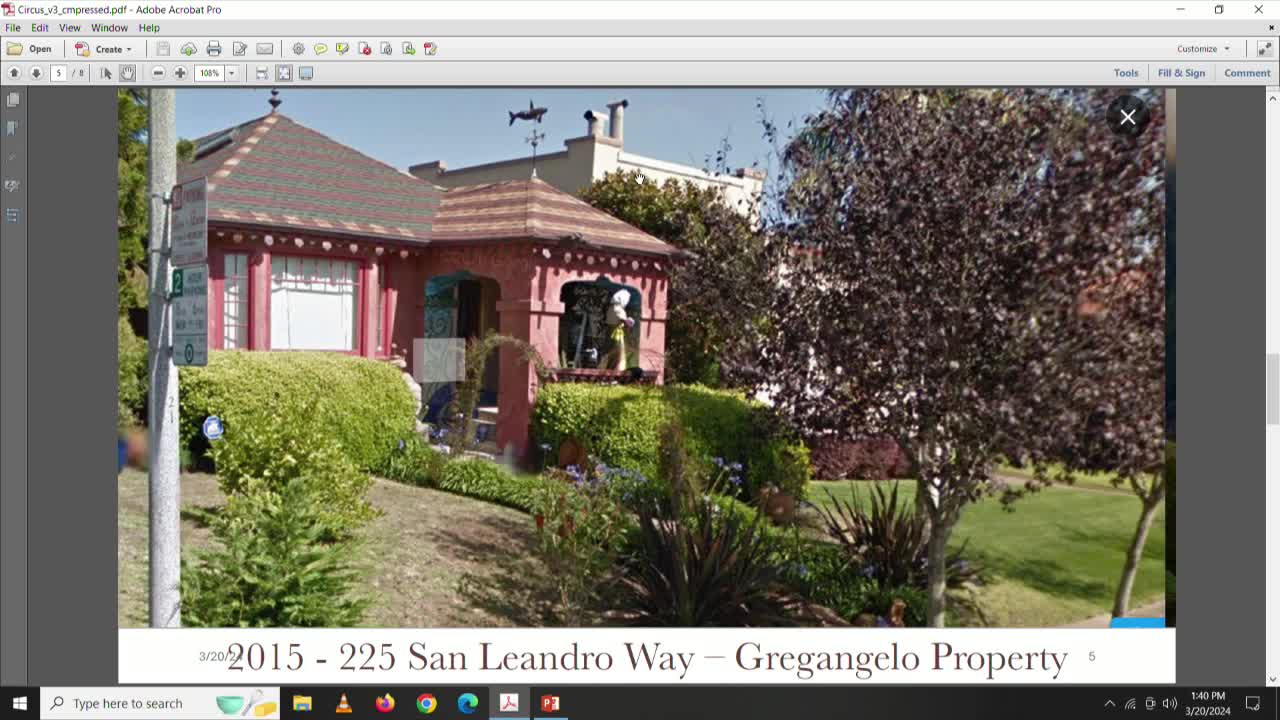Balboa Terrace Residents Oppose Commercialization of Historic Neighborhood
March 20, 2024 | San Francisco City, San Francisco County, California

This article was created by AI summarizing key points discussed. AI makes mistakes, so for full details and context, please refer to the video of the full meeting. Please report any errors so we can fix them. Report an error »

Concerns over neighborhood preservation took center stage at the recent San Francisco City Commission meeting, as residents voiced strong opposition to a proposed landmark designation for a property in Balboa Terrace. The discussions highlighted the tension between maintaining the historic character of the area and the recent commercialization of a residential property.
Residents, including longtime homeowners, expressed their frustration over the transformation of the property into a commercial venue, which they argue has disrupted the tranquility of their neighborhood. One speaker, who has lived across from the property for eight years, emphasized the importance of distinguishing between the long-standing residential use of the property and its recent shift towards commercialization. “This operation has caused a nuisance on the neighbors,” they stated, pointing to increased foot traffic, noise, and litter since the property began operating as a commercial business.
Another resident, Arlene Doyle, raised concerns about the lack of communication regarding the application for a conditional use permit, which would allow for entertainment and outdoor activities. She argued that many neighbors were not informed about the proposal, leading to a skewed perception of community support. “The lack of opposition is something that has been intentionally created,” she claimed, criticizing the applicant for not adequately notifying residents.
Elizabeth Kachikian, another homeowner, echoed these sentiments, warning that approving the landmark designation could set a precedent for further commercialization in the area. “If this commission wants to preserve the historic nature of neighborhoods in San Francisco, it needs to deny this application,” she urged, highlighting the negative impact on traffic and neighborhood character.
As the commission deliberates, the voices of Balboa Terrace residents underscore a critical debate about the balance between development and preservation in San Francisco's historic neighborhoods. The outcome of this meeting could have lasting implications for the community's character and the future of similar residential areas facing commercialization pressures.
Residents, including longtime homeowners, expressed their frustration over the transformation of the property into a commercial venue, which they argue has disrupted the tranquility of their neighborhood. One speaker, who has lived across from the property for eight years, emphasized the importance of distinguishing between the long-standing residential use of the property and its recent shift towards commercialization. “This operation has caused a nuisance on the neighbors,” they stated, pointing to increased foot traffic, noise, and litter since the property began operating as a commercial business.
Another resident, Arlene Doyle, raised concerns about the lack of communication regarding the application for a conditional use permit, which would allow for entertainment and outdoor activities. She argued that many neighbors were not informed about the proposal, leading to a skewed perception of community support. “The lack of opposition is something that has been intentionally created,” she claimed, criticizing the applicant for not adequately notifying residents.
Elizabeth Kachikian, another homeowner, echoed these sentiments, warning that approving the landmark designation could set a precedent for further commercialization in the area. “If this commission wants to preserve the historic nature of neighborhoods in San Francisco, it needs to deny this application,” she urged, highlighting the negative impact on traffic and neighborhood character.
As the commission deliberates, the voices of Balboa Terrace residents underscore a critical debate about the balance between development and preservation in San Francisco's historic neighborhoods. The outcome of this meeting could have lasting implications for the community's character and the future of similar residential areas facing commercialization pressures.
View full meeting
This article is based on a recent meeting—watch the full video and explore the complete transcript for deeper insights into the discussion.
View full meeting
